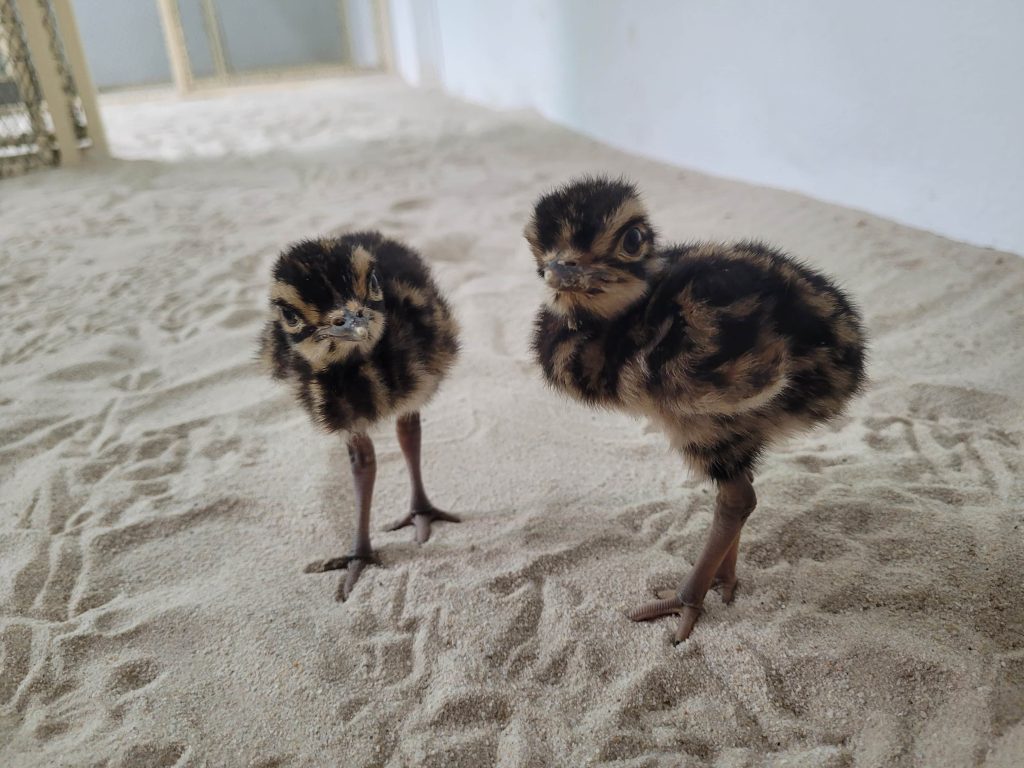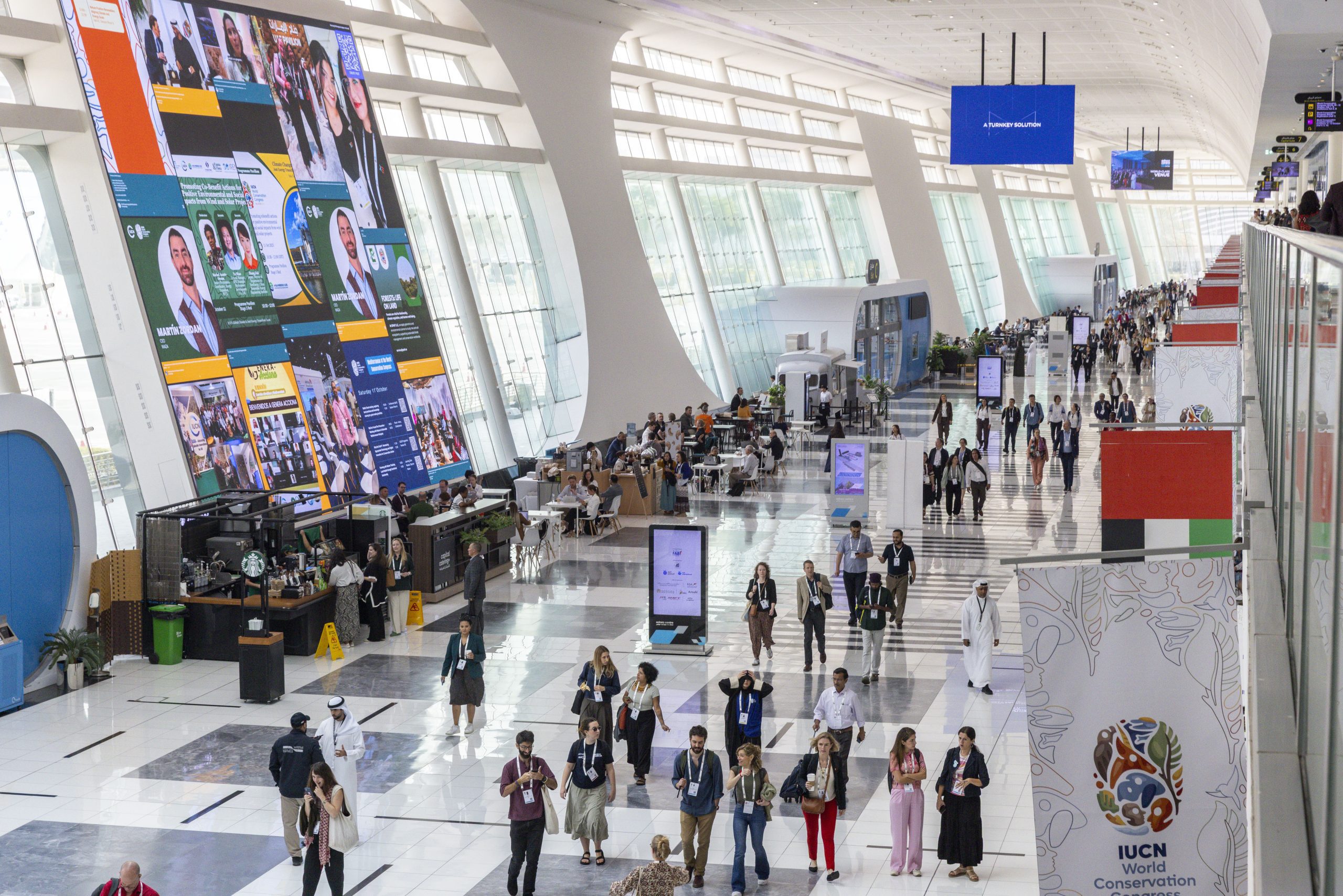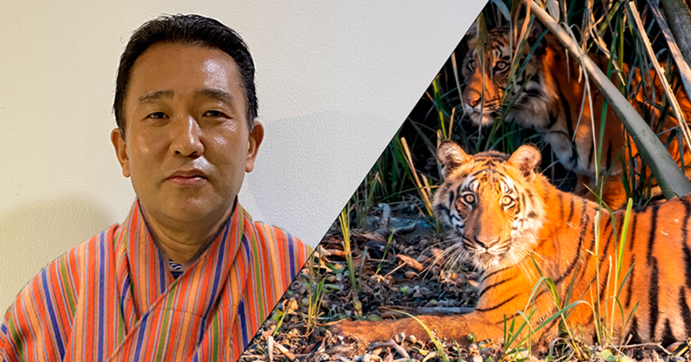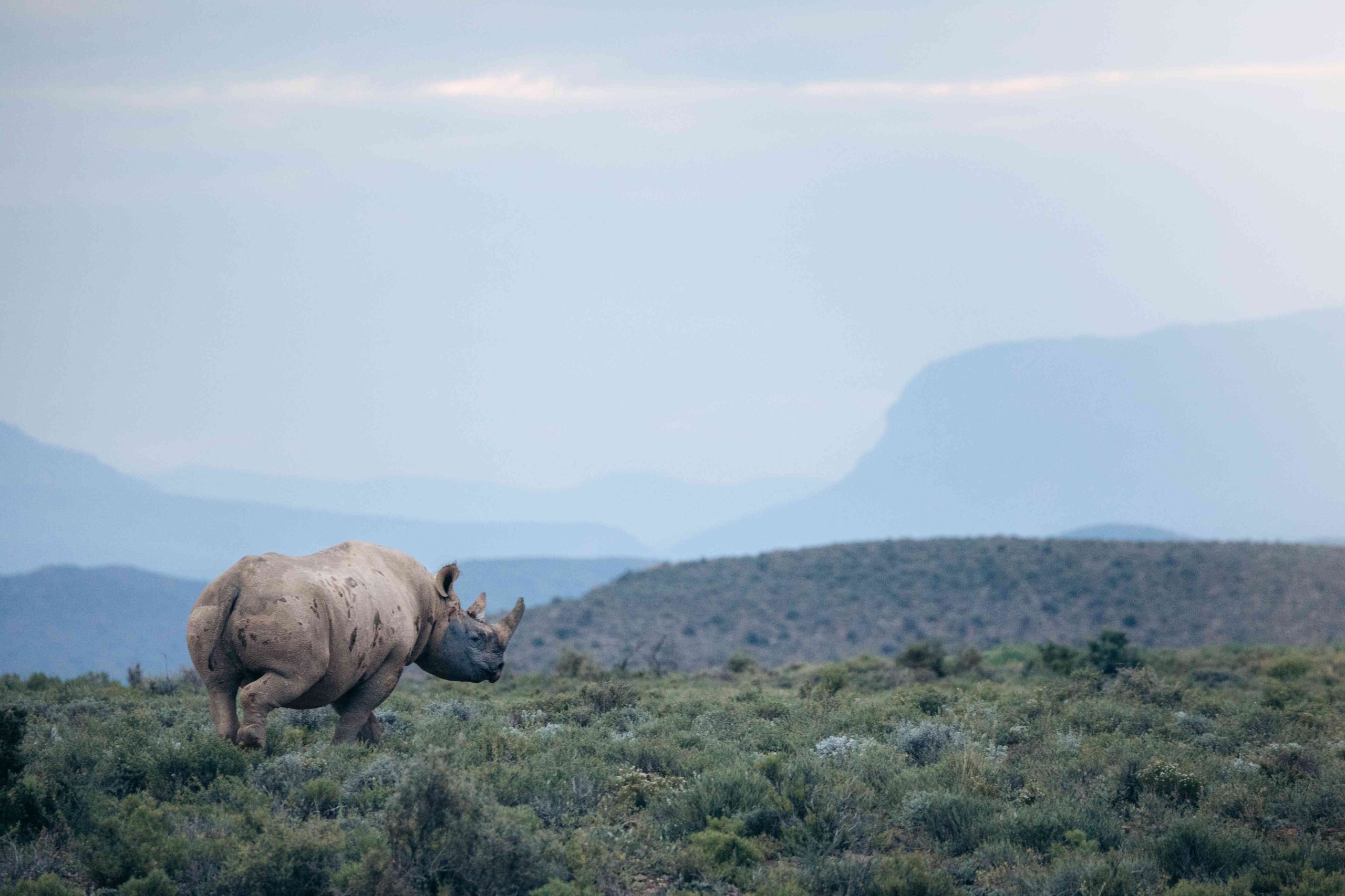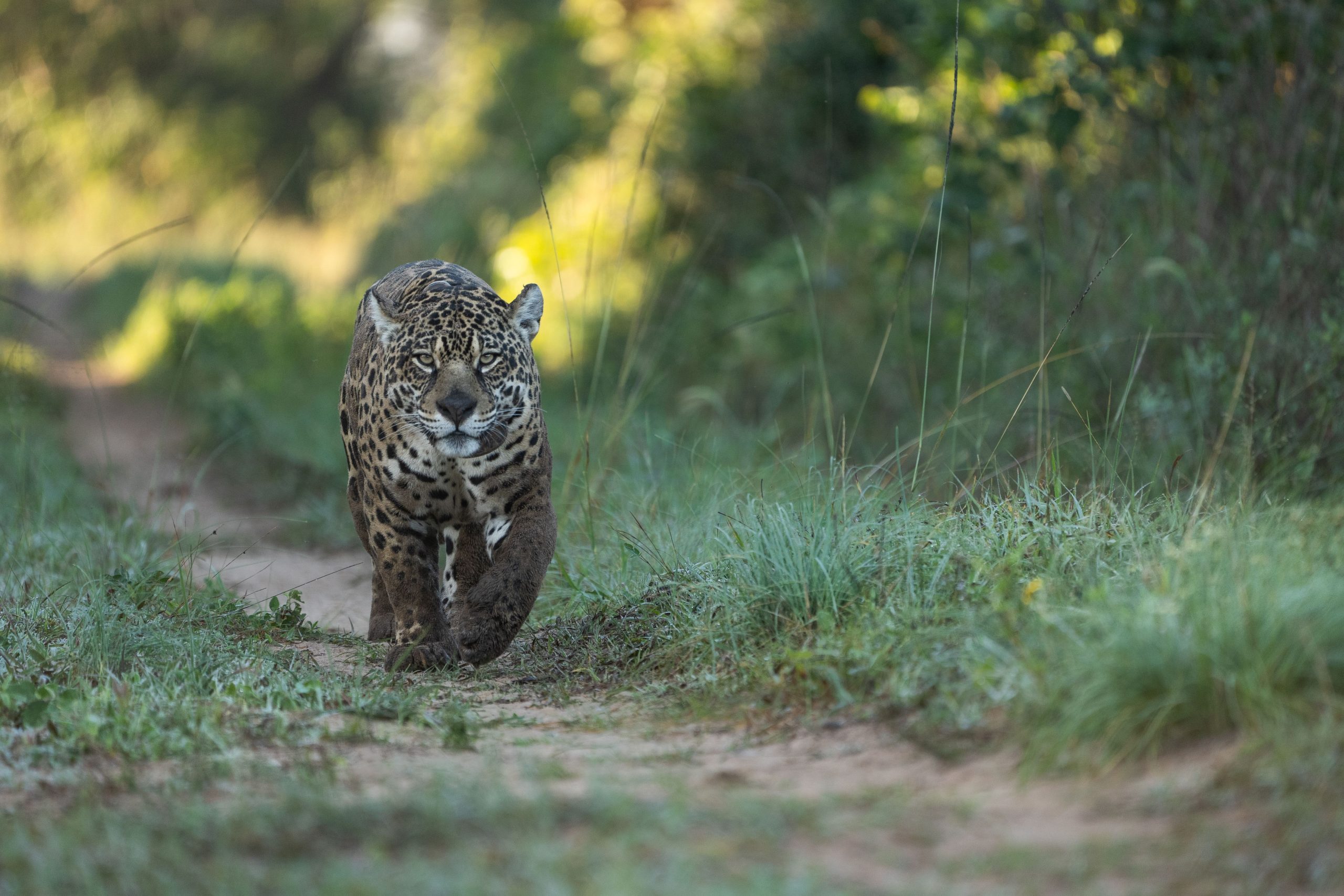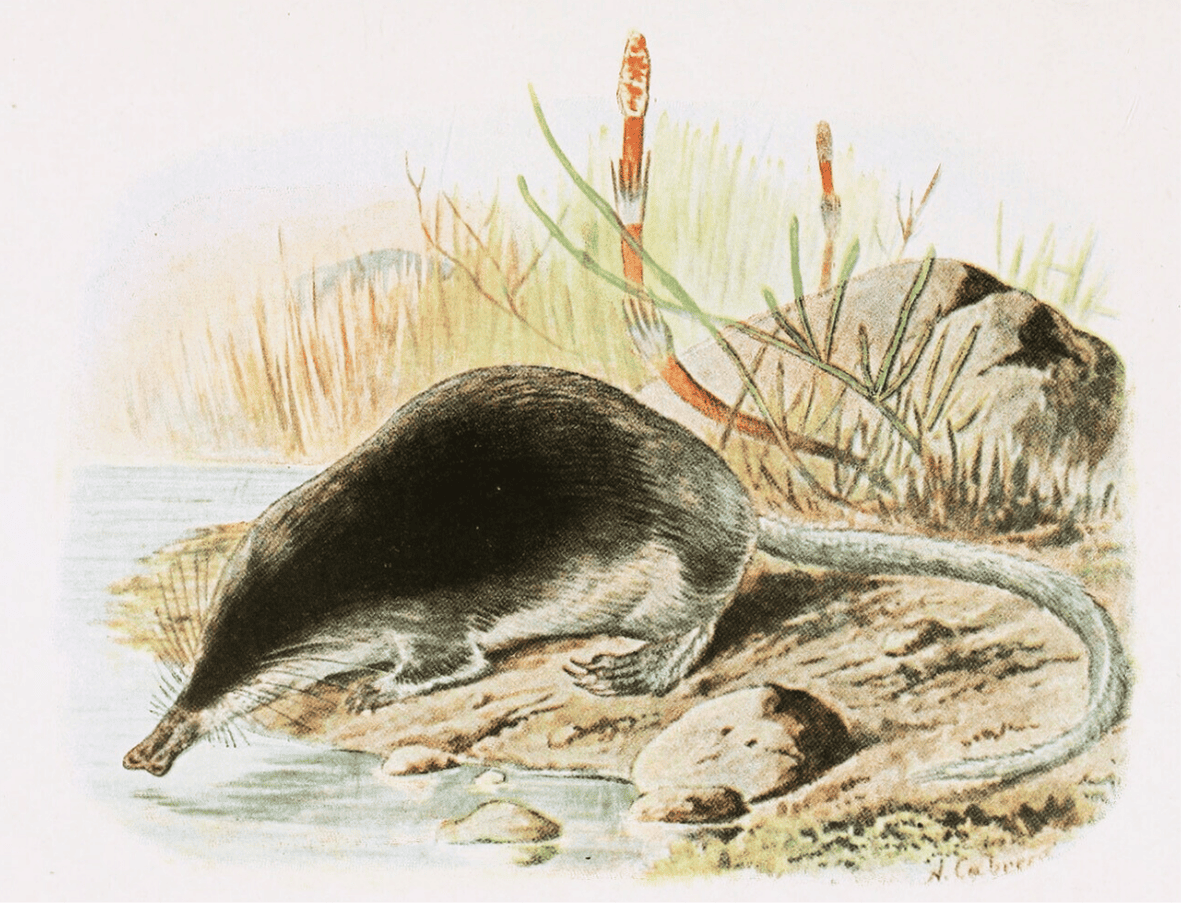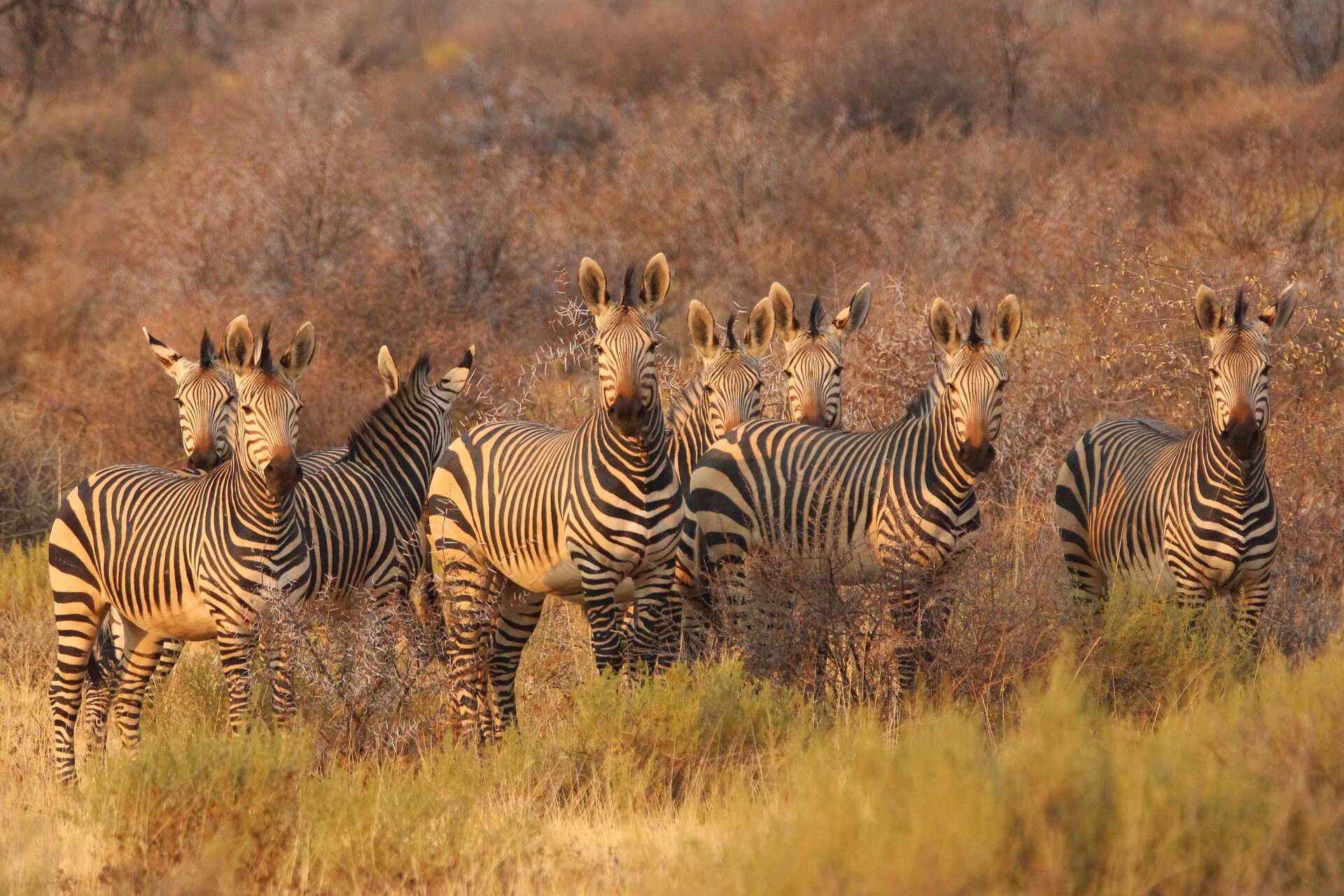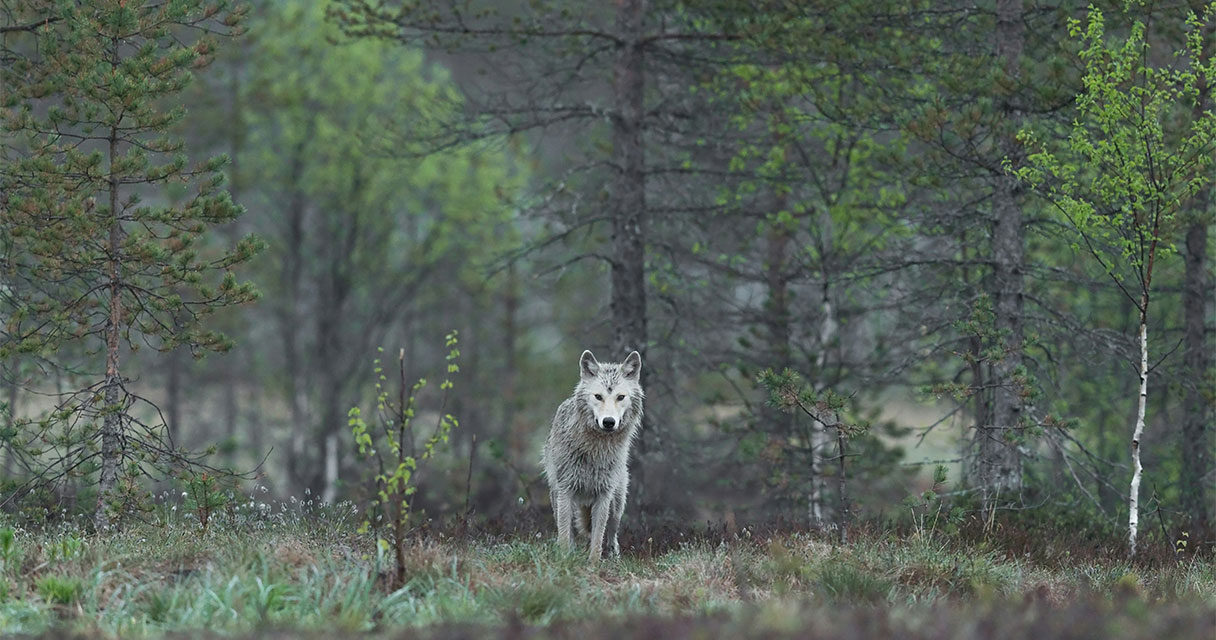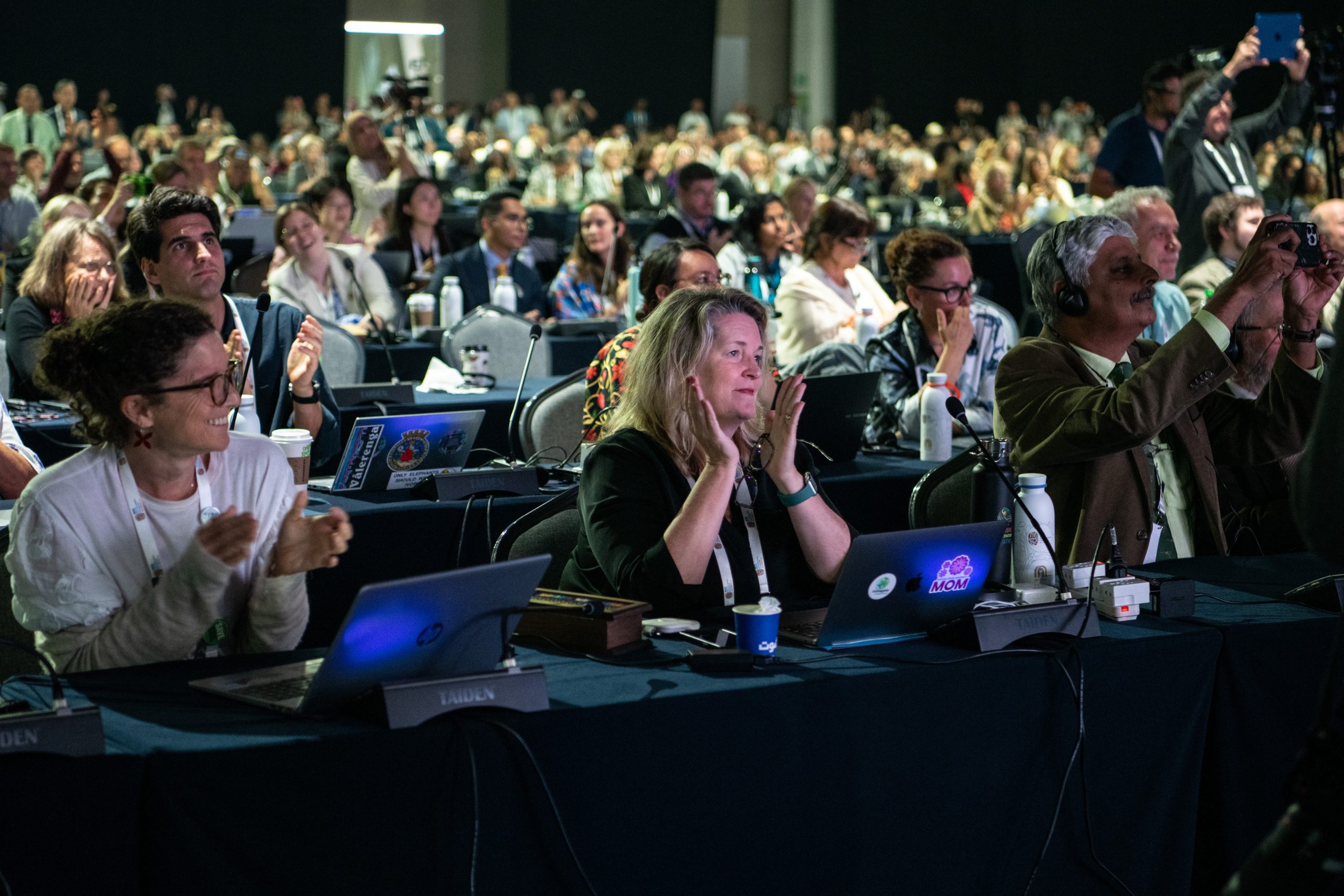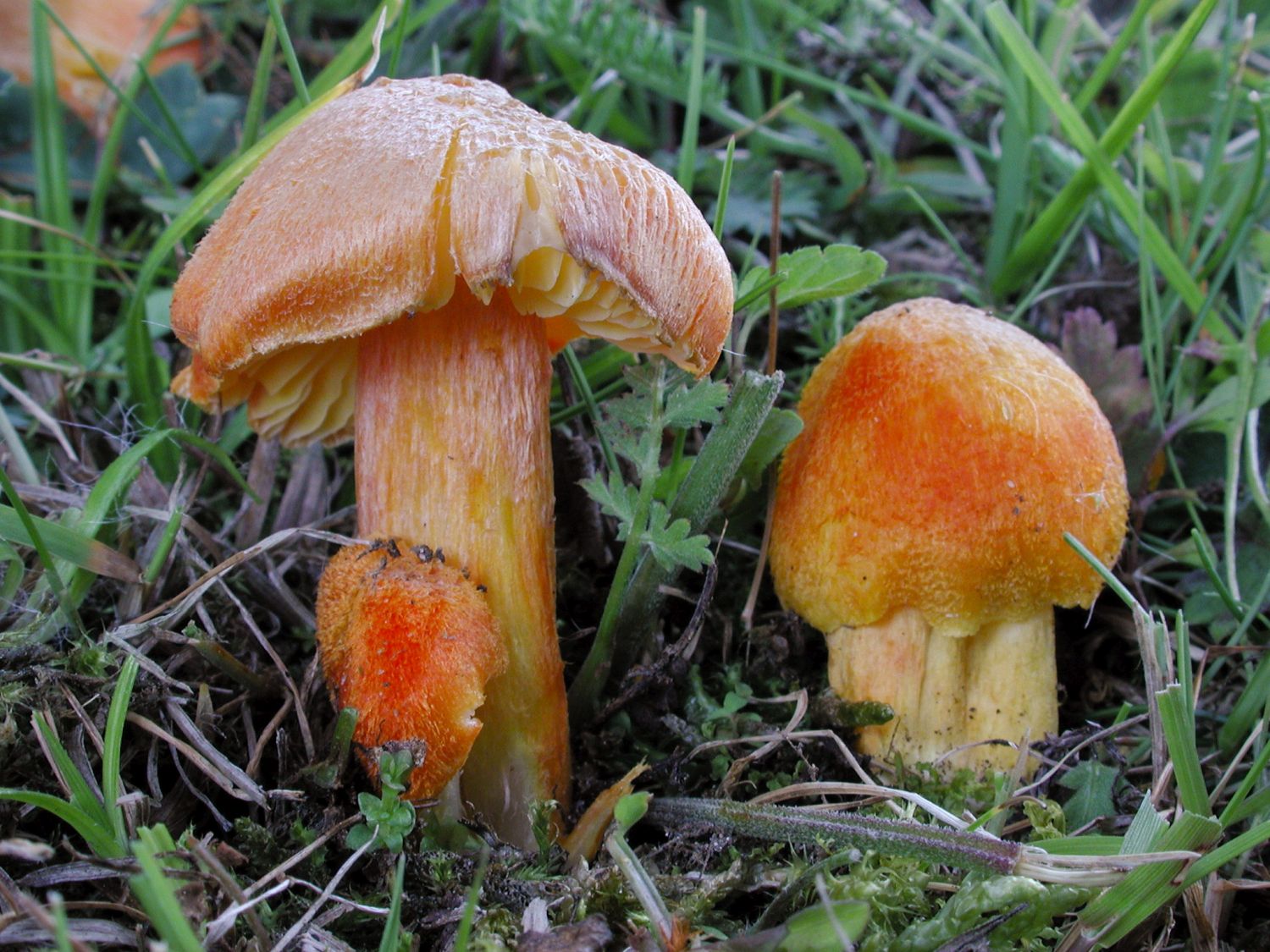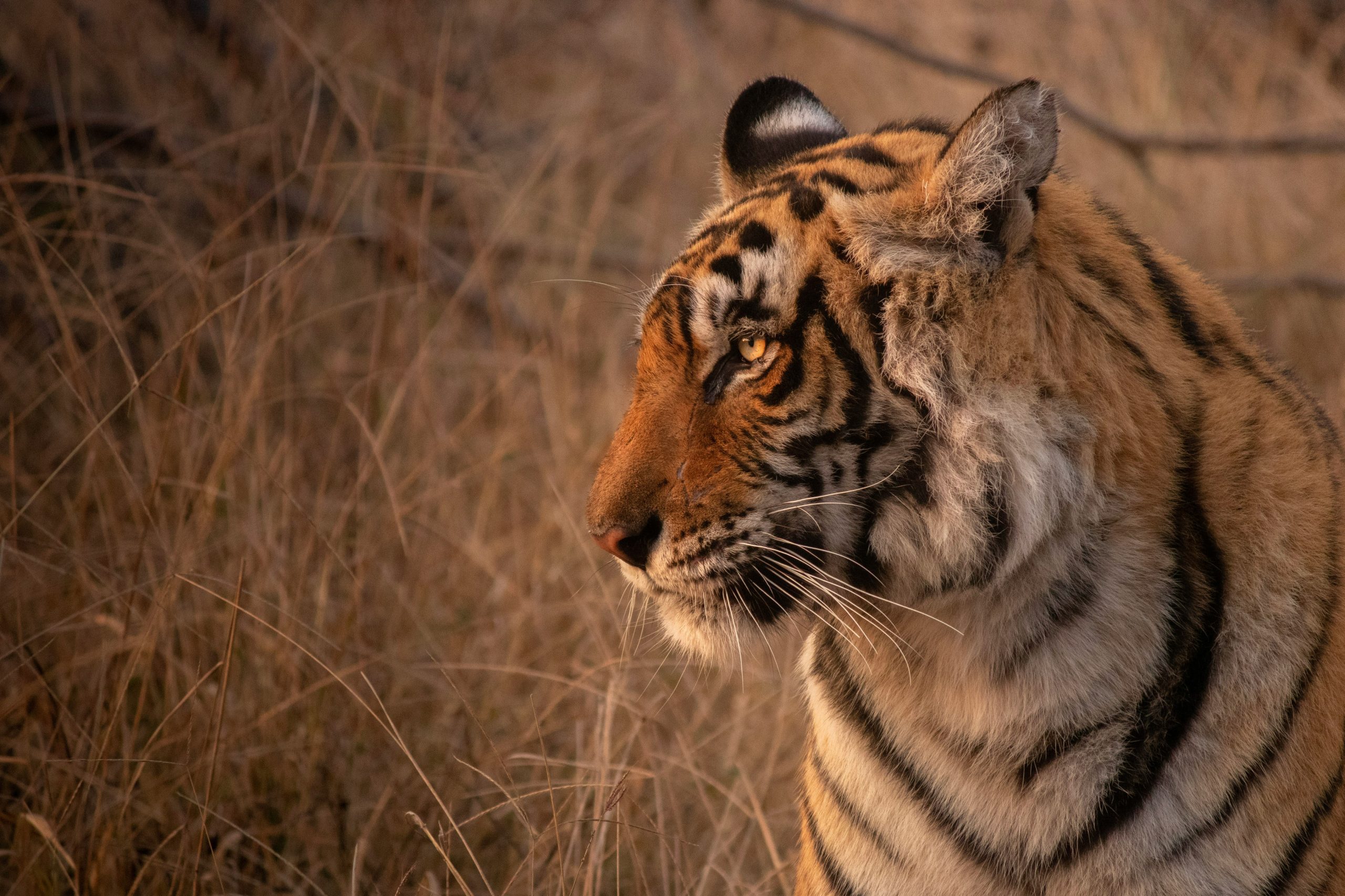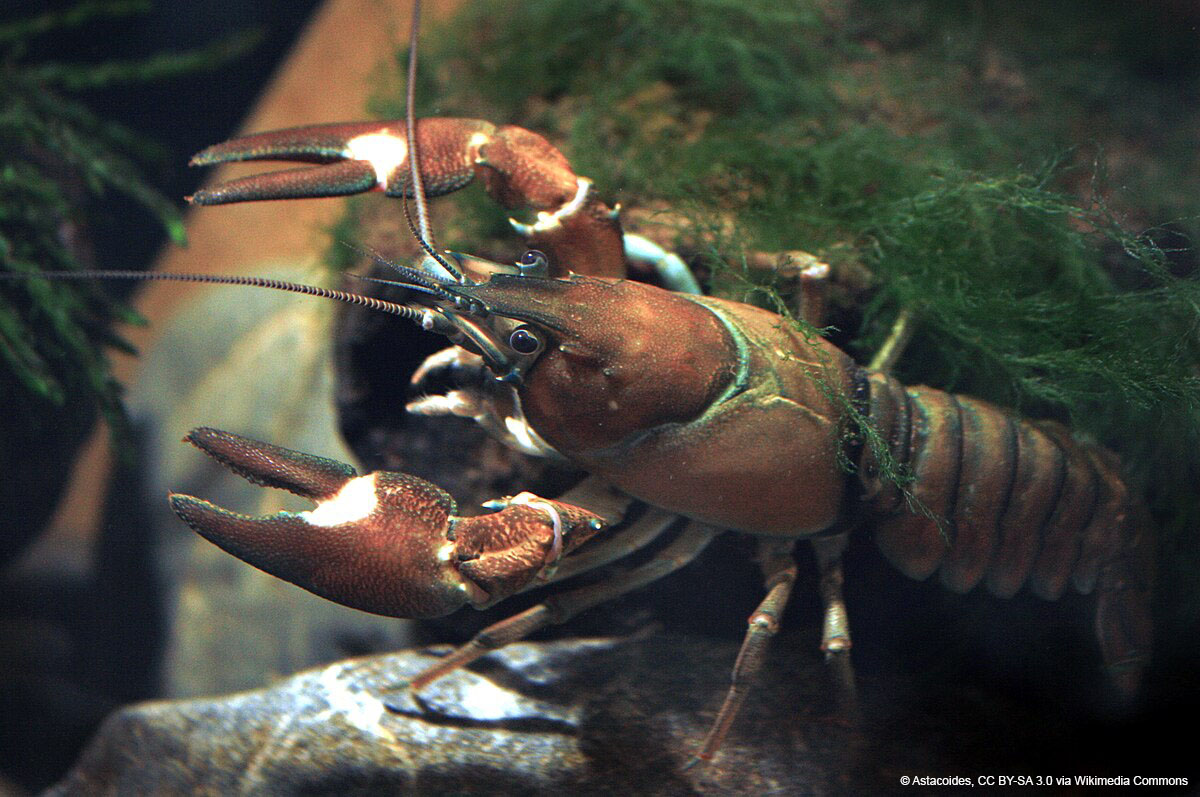Down a gravel path, in the quietest corner of a conservation centre, stands a yellow-walled building surrounded by the looming forests of the Phnom Kulen National Park, Cambodia. Inside, the facility is filled with mounds of tall grass and divided by soft mesh netting to accommodate its flighty birds.
Hearing the creek of the gate opening, one of the smallest residents peers through its netted walls to greet incoming guests with a timid curiosity. Defying a 2013 prediction that the Indochina subspecies could become extinct within ten years, 15 Critically Endangered Bengal Floricans have hatched at this centre in Cambodia. They make up the world’s first assurance colony – a population established to prevent the species from going extinct.

Aerial view of the Bengal Florican breeding facility
The Bengal Florican males, with its distinctively speckled backs and white wings, were once commonly seen leaping above the tall grasslands in a mating display to the brown furry female. But the gradual loss of grasslands to rice cultivation and new hydroelectric dam construction, among other factors, have caused their numbers to nosedive. Conservation efforts are crucial to protect the fewer than 600 individuals that remain in the Tonle Sap Floodplains.
The Angkor Centre for Conservation of Biodiversity (ACCB), a non-profit organisation based in Cambodia, established the world’s first assurance colony for the Bengal Florican in 2019. By collecting eggs from the wild and rearing them in captivity, ACCB is working with its partners to protect the species from extinction. Of the 15 wild-laid eggs hatched in their care, 11 florican birds continue to thrive.
ACCB has been working on the rescue, rehabilitation of native Cambodian wildlife for over 20 years. Their daily tours invite visitors from all over the world to explore the centre, which shelters over 1000 native animals across 30 species that appear on the IUCN Red List of Threatened Species.
In Cambodia, education on the link between conservation in the field and at rescue centres is limited. Raising awareness among Buddhist monks, students and universities is key to helping the community understand ACCB’s work. “By engaging with diverse groups, we hope to bridge the conservation gap across generations,” said Christel Griffioen, ACCB’s Country Director. Local communities are also focused on protecting the Bengal Florican habitat as these birds attract birdwatchers and ecotourists that, in turn, provide a sustainable income for them.

Bengal Florican roams around the tall grass mounds within its facility
During the Bengal Florican breeding season, the local community alert ACCB, and its partners, when they locate a wild-laid Bengal Florican egg. Depending on the location, environmental conditions, and timing within the breeding season, eggs are either carefully collected and transported to ACCB’s predator-safe Breeding Facility or left in-situ where community members monitor the nests. Injured adult Bengal Floricans spotted by locals are transported to ACCB’s quarantine facility– built through the Ex situ Management of Bengal Floricans Houbaropsis bengalensis blandini in Cambodia project, supported by IUCN through the Critical Ecosystem Partnership Fund.
A full-time team at ACCB is dedicated to hand-rearing newly hatched chicks until they’re old enough to feed alone. They’re then moved into a facility that mimics their habitat where they remain, with limited to no human contact, safely cocooned in taller grass and soft ceilings that allow the males to practice their mating display. “We’re always asking ourselves; can we transfer what we know about these birds in the wild to get them to thrive at our facility?” Christel explains.
All the data the team collect increase the bird’s chances of survival in the wild. DNA samples collected from the Bengal Floricans at the facility help understand the genetic makeup and potential breeding pairs of the assurance population. This information can also be used to assess against genetic samples collected from wild individuals to understand the breeding potential of the overall population in Cambodia.
The 11 surviving birds hatched at ACCB from eggs laid in the wild, along with four wild-hatched birds currently in the assurance population, are the founders of the captive breeding population that ACCB hope to release into the wild once their habitat is safe. In the meantime, they remain dedicated to improving their facility and creating the safest environment and highest standards of care for these birds.
IUCN also continues to support ACCB through ongoing projects, including their recent initiative to release captive-bred and head-started Critically Endangered Elongated Tortoises from the breeding and assurance colony for the species, established and maintained by the centre.


